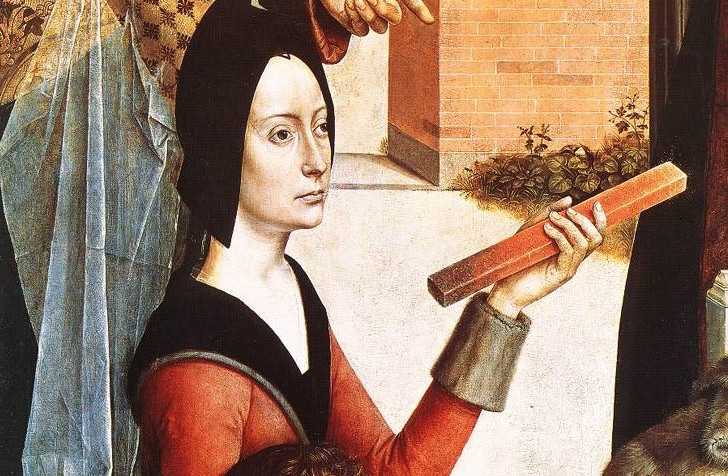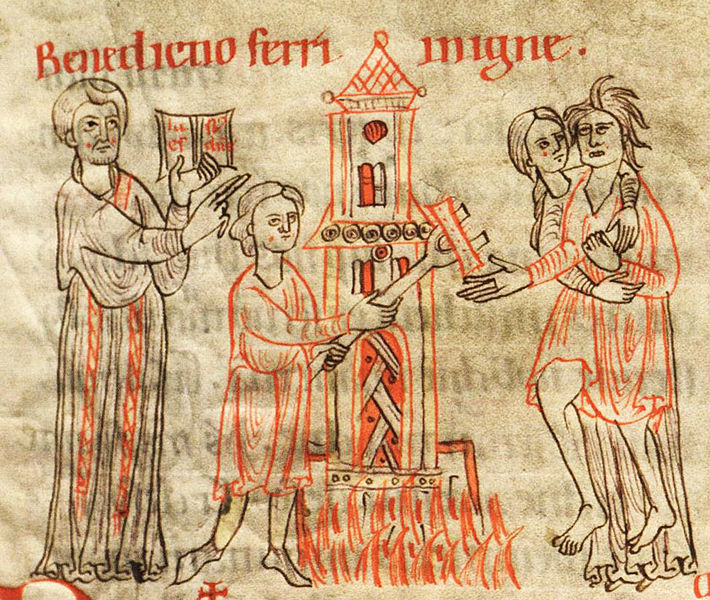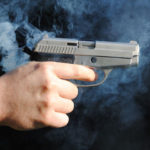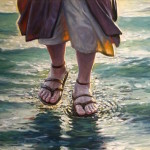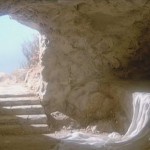Trial by Fire: Modernity’s Response to Miracles
by Joe Heschmeyer
Filed under Christianity and Science
Perhaps no single image captures the popular conception of the “Dark Ages” than the idea of trials by ordeal. These infamous trials are the reason we refer to a difficult situation as an “ordeal,” or perhaps a “trial by fire.” One of the most famous depictions of a trial by ordeal is in Monty Python and the Holy Grail. A woman is accused of witchcraft, and rather than gathering evidence or taking any but the most cursory of testimony, an elaborate test is designed to “objectively” determine if she’s a witch:
While the scene is exaggerated for comic effect, it’s not far off the mark. Steven Levitt and Stephen Dubner, writing in the Wall Street Journal, explain:
"During the Middle Ages, if a court couldn’t determine whether a defendant was guilty, it often turned the case over to a priest who would administer an 'ordeal' using boiling water or a smoking-hot iron bar. The idea was that God, who knew the truth, would miraculously deliver from harm any suspect who had been wrongly accused."
As Levitt and Dubner note, “as a means of establishing guilt, the medieval ordeal sounds barbaric and nonsensical.” This assessment seems half-correct. As a judicial process, they were an oft-bloody one, which is why canon 18 of the Fourth Lateran Council (1215) put an end to ordeals as part of a broader effort to disassociate clerics from bloodshed (a canon which, interestingly, banned priests from participating in everything from leading mercenaries to performing surgery).
But while the ordeals could be barbaric at times, they were perfectly sensible. The defendant is put into a position in which, barring a miracle, he’ll both be badly hurt and found guilty. God alone can save him. The logic — and the justice — of the process is rooted in the fact that both the judicial authorities and the accused believed in God (significantly, ordeals were only ever done to believers). According to George Mason’s Peter Leeson, this is rooted in “a medieval superstition called iudicium Dei (judgments of God). According to that superstition, God condemned the guilty and exonerated the innocent through clergy-conducted physical tests.”
How does this “superstition” hold up? You might be surprised. Levitt and Dubner, summarizing Leeson’s findings:
"Dr. Leeson analyzed a set of church records from 13th-century Hungary; it included 308 cases that entered the trial-by-ordeal phase. Of these, 100 were aborted before producing a final result. That left 208 cases in which the defendant was summoned by a priest to the church, climbed the altar, and was forced to grab hold of a red-hot iron bar.
How many of those 208 people do you think were badly burned? All 208? We’re talking about red-hot iron here. Maybe 207 or 206?
The actual number was 78. Which means that the remaining 130—nearly two-thirds of the defendants—were miraculously unharmed and thereby exonerated."
The “plea rolls” kept by English courts likewise reveal 19 cases of trial by ordeals, in which 17 of those accused were exonerated. This is what Leeson refers to as “the peculiar puzzle of ordeals: trials of fire and water that should have condemned most persons who underwent them did the reverse. They exonerated these persons instead. Boiling water rarely boiled persons who plunged their arms in it. Burning iron rarely burned persons who carried it.”
And here we come to a fascinating point.
Leeson’s just uncovered records in two different countries revealing what certainly appears to be objective evidence of miracles. We’re not talking about a case or two in which somehow held a red-hot iron and walked away unharmed somehow. We’re talking about well over a hundred such incidents, just in the limited records that we know of. Yet Leeson can’t accept even the possibility that the ordeals might be what they claimed to be (miraculous). Instead, he offers this by way of explanation:
"Examining the outcomes of the 208 cases in which defendants underwent ordeals is more instructive. The data are telling: probands failed their ordeals in only 78 cases, or 37.5 percent of the time. Probands passed their ordeals in 130 cases, or 62.5 percent of the time. Unless nearly two-thirds of ordeal-officiating priests did not understand how to heat iron, these data suggest priestly rigging intended to exculpate probands. Ordeals exonerated the overwhelming majority of probands tried in the basilica of Nagyva´rad."
Leeson, then, contemplates only two possibilities: either that “nearly two-thirds of ordeal-officiating priests did not understand how to heat iron,” or that priests were falsifying miracles in nearly two-thirds of these cases. Each of these options are ridiculous. Levitt and Dubner inadvertently show this, by describing what Leeson’s theory might actually look like:
"Unless these 130 miracles were miracles, how can they be explained? Dr. Leeson thinks he knows the answer: 'priestly rigging'—that is, the priest somehow tinkered with the setup to make the ordeal look legitimate while ensuring that the defendant wouldn’t be disfigured. Maybe the priest swapped out the hot iron bar for a cooler one, or—if using the boiling-water ordeal—dumped a pail of cold water into the caldron before the congregants entered the church."
Think of some of the elements involved in priestly rigging:
- First, you need the witnesses to be stupid enough to believe that a piece of iron is smoldering hot when it isn’t. Also, it helps if they can’t tell the difference between boiling water and mildly warm water.
- Second, you need a massive conspiracy of priests to fake miracles. We’re not talking about a bad priest here or there, but apparently the entire Catholic clergy cooperating to perpetuate this. And not just in Hungary, but in England, and everywhere else that trials were conducted by ordeals. Levitt and Dubner point out that this theory only works if we assume that virtually all Medieval priests were atheists: “If medieval priests did manipulate the ordeals, that might make them the only parties who thought an all-knowing God didn’t exist—or if He did, that He had enough faith in his priestly deputies to see their tampering as part of a divine quest for justice.”
- Third, you need Catholic congregations docile (and gullible) enough that they’ll accept anything that these conniving priests tell them, no matter how ridiculous.
- Fourth, you need a steady supply of seminarians who can immediately switch from being pious, stupid laypeople to evil, conniving priests. Remember: none of the laity are in on this conspiracy, but apparently all of the priests are. Leeson’s best explanation for this global conspiracy of blasphemous miracle-doctoring is that “According to the developing doctrine of in persona Christi, priests may have believed that they were acting in the person of Christ—that is, that God was guiding them—when they manipulated ordeals.” So apparently, you also need priests and seminarians who don’t understand what the doctrine of in persona Christi means.
- Fifth, you’re left positing a global conspiracy that left no paper trail, and apparently raised no eyebrows. That is, we have plenty of matter-of-fact court and church records relating to ordeals, and plenty of documents even describing the precise conditions in which to perform them, but none of these documents (even the ones written by and for priests!) tell the priest when and how to doctor the miracle.
- Sixth, you’ve got the problem of the exonerated guilty. Peter is tried by ordeal, “miraculously” found innocent, and set free. Subsequent evidence emerges showing that he was really guilty. Even if this evidence were never brought to court, Peter and everyone who knew him to be guilty would now recognize the miracle as a sham.
- Seventh, you’ve got the problem of the condemned innocent. This is particularly true if further evidence reveals his innocence… or someone else’s guilt.
- Eighth, you’ve got the defendant’s own experience. That is, even a genuinely-innocent man would realize that the reason he was found innocent was that the ordeal was rigged: that the iron wasn’t particularly hot, etc.
That’s just a start. This, by the way, is a 12th century image depicting trial by fire, the ordeal that Leeson apparently thinks can be easily and repeatedly faked:
Given all of this, Leeson hasn’t really given us much reason to think that there wasn’t something miraculous at work here. Of course, that doesn’t prove that it is. The Fourth Lateran Council’s willingness to put the kibosh on this judicial method reveals the Church’s own discomfort with ordeals, and there seem to have been cases of wrongly-condemned defendants when God didn’t perform miracles on demand. But we’re free to believe that, of the 147 exonerations Leeson analyzed, some or all of those results were miraculous.
Leeson, Levitt, and Dubner don’t have that same freedom. Because they view miracles as absurd (Leeson writes it off as “superstition” some 30 times in his article, while Dubner and Levitt list it as a method to “trick the guilty and gullible”), they can’t even consider the possibility of miracles, regardless of the evidence staring them squarely in the face. It’s not a matter of rejecting miracles because the evidence for them isn’t strong enough. It’s a matter of refusing to accept the evidence, no matter how strong, because of a prior commitment to rejecting miracles. I’m reminded of something I wrote about the USA Today demonic possession story:
Christians are free to disbelieve that this case was demonic, of course. Believing that demons exist doesn't mean that everything blamed on demons is really demonic, as opposed to delusions, lies, mental illness, etc. There's no prior commitment to this being demonic or non-demonic: Christians are free to simply evaluate the evidence as it is presented.
But for atheist materialists who deny the existence of the spiritual realm, stories like this one are a bit of a red six of clubs. There's no way to easily harmonize the facts presented with the belief that that matter is all that there is. This worldview prejudges the case: the answer must be that there was no demonic activity.
Which brings us to a final irony: we moderns think of trial by ordeal as proof positive of the irrational dogmatism of our religious ancestors’ culture. In fact, the story seems to reveal a great deal more about the irrational dogmatism of our own irreligious culture.
Related Posts
Note: Our goal is to cultivate serious and respectful dialogue. While it's OK to disagree—even encouraged!—any snarky, offensive, or off-topic comments will be deleted. Before commenting please read the Commenting Rules and Tips. If you're having trouble commenting, read the Commenting Instructions.




